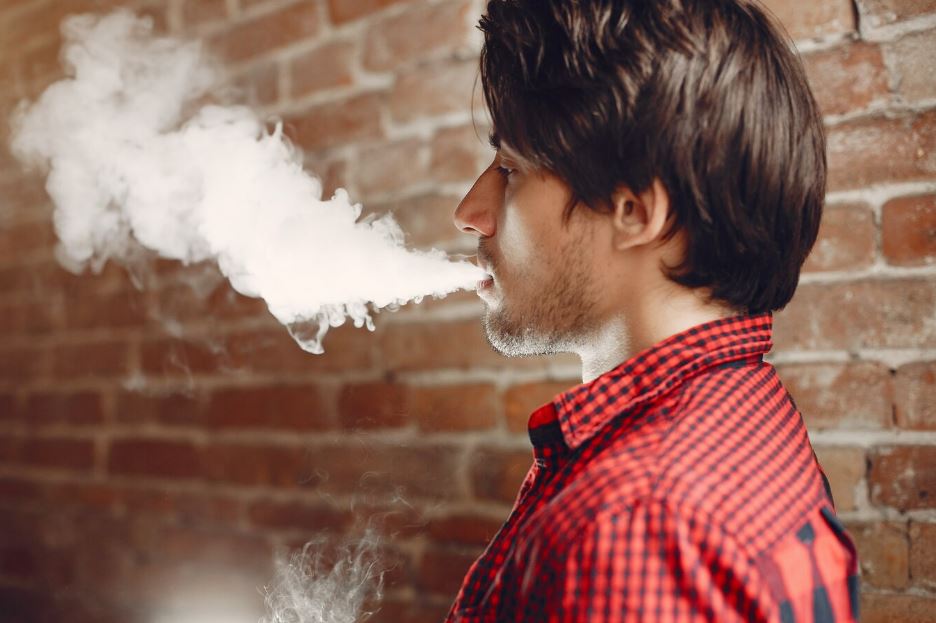
A silent but extremely harmful epidemic has surfaced in recent years, focusing on a surprising group of people: young, healthy people who merely desired a taste of nicotine or THC. The use of e-cigarettes has changed from being seen as a smoking cessation method to a major public health risk due to vaping lung disease, also known as EVALI. Pulmonologists are rushing to keep up with the stories that are playing out in emergency rooms across the nation; these are not cases that you hear about casually.
Doctors discovered that vitamin E acetate, a substance used to dilute THC oils in illegal vape cartridges, was embedded deep in the lungs of dozens of patients they examined. When applied topically or taken as a supplement, vitamin E is safe, but when it is vaporized, it acts very differently. It interferes with oxygen exchange by forming a waxy coating on lung tissue. That finding was revolutionary, especially in terms of comprehending why lungs that had been healthy before abruptly failed under such an imperceptible threat.
Key Insights into Vaping Lung Disease
| Aspect | Details |
|---|---|
| Primary Conditions | EVALI (vaping-associated lung injury), Lipoid Pneumonia, Popcorn Lung |
| Main Triggers | Vitamin E acetate, THC oils, Diacetyl flavoring chemicals |
| Core Symptoms | Cough, chest pain, shortness of breath, fever, nausea, vomiting, fatigue |
| High-Risk Groups | Adolescents and young adults, especially those using illicit or flavored vape products |
| Diagnostic Approach | Based on exclusion: CT scans, chest X-rays, patient vaping history, bloodwork |
| Common Treatments | Corticosteroids, oxygen therapy, mechanical ventilation in severe cases |
| Potential Complications | Respiratory failure, chronic lung damage, rehospitalization, death |
| Long-Term Effects | Persistent lung inflammation, reduced lung capacity, heightened infection risk |
| Recommendation for Users | Avoid THC vape products, seek professional care early, monitor lung function post-recovery |
Other vaping-related illnesses like lipoid pneumonia and bronchiolitis obliterans, commonly referred to as popcorn lung, have posed particularly sinister challenges, even though EVALI is still the most concerning. When fatty compounds in vape oils enter the lungs and start an inflammatory chain reaction, lipoid pneumonia develops. There is only suffocating inflammation instead of bacteria, unlike traditional pneumonia. Conversely, factory workers who were exposed to diacetyl—a buttery flavoring substance later discovered in e-cigarette juices—are responsible for the moniker popcorn lung. The airways become scarred as a result of this condition, making breathing difficult. It can only be managed; no treatment can reverse it.
Regular screening for vaping has become a necessary precaution in many clinics, particularly pediatric ones. The importance of detecting symptoms early has been underlined by pulmonologists such as Dr. Pnina Weiss. As part of her strategy, she asks all patients older than twelve if they have ever vaped. The logic is straightforward: recovery, when it occurs, is frequently insufficient, and damage advances quickly. Specialists must be on guard because some patients relapse as soon as steroid treatments are tapered.
Surprisingly, the disease doesn’t have a clear course. Patients occasionally have chest pain and a slight cough. Others experience symptoms that rapidly worsen and lead to respiratory failure. Intensive care is where more than half of all EVALI hospitalizations occur, and many patients need mechanical ventilation or oxygen support. Teenagers who have had their lungs damaged by chemicals that are supposed to look like fruit or mint are increasingly being intubated.
Many cases of EVALI were misdiagnosed as COVID-19 during the pandemic because symptoms like fever, cough, and low oxygen levels overlapped. In a number of crucial cases, this diagnostic misunderstanding resulted in treatment delays. Hazy shadows in the lungs are frequently seen on a chest X-ray, which is a clear indication of vaping injury. The picture becomes clearer—though no less grim—when combined with a patient’s admission of recent e-cigarette use, particularly of THC or flavored products.
This crisis has surely been exacerbated by the marketing strategies used by the vaping industry. Vape pens were transformed into stylish accessories through targeted internet advertisements, sleek packaging, and celebrity endorsements. Actors, influencers, and artists have all been observed glamorizing their gadgets while hardly mentioning the hidden expense. A brief counter-narrative was offered by Billie Eilish’s infrequent admission that she regrets her vaping habit, but more significant cultural change is still taking time. The sense of safety endures as long as public figures continue to speak openly.
The modern form of vaping is particularly misleading. E-cigarettes don’t produce tar or a persistent odor like regular cigarettes do. Rather, they emit a vapor that appears pure, even innocuous. However, this vapor contains substances like diacetyl, formaldehyde, and acrolein, all of which are connected to lung damage and chronic inflammation. The respiratory system experiences a chemical storm when these substances are inhaled on a daily basis, sometimes dozens of times.
Doctors have observed a minor decrease in hospitalizations related to vaping lung disease in recent months. Increased public awareness and restrictions on flavored vape products have been partly blamed for this improvement. But for many, the damage is already done. Once bursting with energy, young adults now struggle with long-term respiratory limitations and are dependent on steroids.
Due to addiction or false information, many people continue vaping in spite of the risks. A potent force that is frequently minimized in social media narratives is nicotine dependency. Many people think that vaping is a “healthier” alternative to smoking cigarettes. Even though some vape liquids might contain fewer carcinogens, the presence of dangerous additives can still have serious repercussions. No vape is safe for the lungs, according to the American Lung Association, especially those that contain THC oils or flavorings.
Recovery is a difficult process for people with EVALI. A follow-up visit with a pulmonologist is crucial after hospital discharge. Pulse oximetry, lung function testing, and occasionally spirometry to track oxygen exchange are all part of these visits. Patients are advised to abstain from vaping in all its forms for good.
Researchers intend to create more precise treatment plans and preventative measures as new information becomes available. However, early intervention and cessation are currently the most effective measures. Psychologists and addiction specialists are frequently included in medical teams, emphasizing the behavioral and emotional aspects of this illness. It rarely takes willpower alone to stop vaping; instead, structured support, education, and sometimes medication are needed.
It’s a terrifying experience for families. Parents watch as their kids, many of whom are under 25, struggle to breathe while wearing oxygen masks. They never saw this scene coming, especially when their teenagers started vaping and thought it was harmless fun. In a hospital interview, one mother stated, “I thought I was sending my son off to college, not a ventilator.”
The trend can be reversed by implementing smart public health measures, such as stricter regulations for vape shops and educational initiatives in schools. Society can lessen these preventable tragedies by switching from reactive care to proactive prevention. Similar to how seatbelt campaigns have reduced fatalities, raising public awareness of vaping’s true effects can also save lives.
